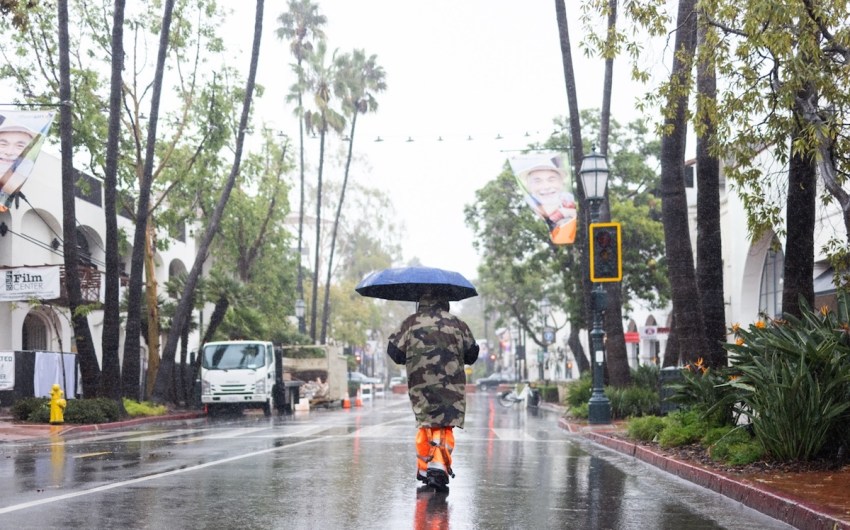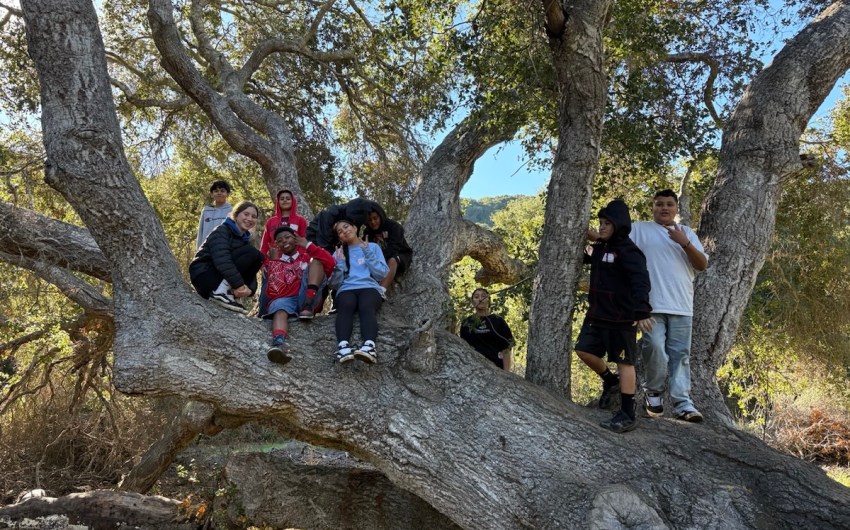
Beachgoers found a female sea lion stranded on Haskell’s Beach last week, exhibiting the signature signs of domoic acid poisoning: disorientation, seizures, head bobbing, and lethargy. Volunteers with the Channel Islands Marine Wildlife Institute (CIMWI) monitored the sea lion for two days before rescuing her on Wednesday.
It was Day 36 of the domoic acid algae bloom that is killing marine mammals across the Central Coast.
The stranded sea lion appeared very thin and tired. She barely flinched at the rescue team’s approach. Volunteer David Mendelson clapped to see if she would respond, but she did not lift her head. He did a full assessment of the animal, checking for injuries or other potential ailments. It was clear she was likely suffering from domoic acid poisoning, which earned her an express ticket to the CIMWI rehabilitation center.
After checking with the homebase at CIMWI, the three volunteers — Mendelson, Ken Hughes, and Mark Sherman — grabbed a big net, wooden boards, and a kennel to catch her and transport her back to the truck. She seized as the net went over her, but the team was able to gently coerce her into the kennel.
They are working around the clock to save sea lions like her. “There are just so many,” said veteran volunteer Ken Hughes. “We almost have to laugh to not cry, we’re so overwhelmed.”
On Santa Barbara and Ventura beaches, CIMWI is fielding more than 150 reports of stranded animals suffering from domoic acid every day. According to Ruth Dover, CIMWI’s managing director, most are adult female California sea lions, and many have been pregnant, with some “spontaneously aborting” on the beach and in care at the institute.

“CIMWI volunteers are currently assessing 15-20 animals each day,” she said. However, the rapid onset and severity of the domoic acid neurotoxin limit the success of rehabilitation efforts.
CIMWI is seeing high mortality rates this season.
“In many cases, these animals succumb to the effects of the toxin and each animal that survives is left with some level of brain damage and the potential for chronic exposure,” Dover said.
In just 35 days, CIMWI has responded to more than 250 sea lions and 10 dolphins exhibiting signs of domoic acid poisoning. All the stranded dolphins died on the beach or shortly after rescue. About 20 percent of reported animals have died before crews arrived at the beach.
Mendelson gave the Haskell’s female a 50/50 chance of survival. Seizures usually mean the prognosis is grave, but she did display some cognitive function, which gave him optimism. At the rehab facility, she is being treated with fluids, steroids, and anti-seizure medication.
The treatment of choice is primarily fluids, to essentially flush the toxin out of their system, but its success depends on the dosage, Mendelson explained. “Sometimes, though, we’re surprised by the ones that make a recovery,” he said.
















You must be logged in to post a comment.